|
| “Sharing
of Soil Bioengineering Experiences Seminar”
Held
in Kathmandu, Nepal, Hotel Himalaya (Rato Baithak)
February
25, 2009
Organized
by Mr. Kalyan Thapa, Terra Erosion Control Ltd’s Asia
representative, the seminar was aimed at sharing experiences
between Nepalese practices, environmental policies and
Western Canadian applications. Attendees included various
sectors of Nepalese governmental agencies, consultants
and foreign organizations.
The
session included the following subjects and speakers:
-
“Environmental
Considerations in Infrastructure Development Projects
in Nepal: Legal Requirements and Practices”
by Ramesh Prasad Sapkota, Environmental
Specialist and Naba Raj Neupane, Environmental Geologist
from the Department of Environmental Science, Amrit
Campus under Tribhuvan University, Kathmandu, Nepal.
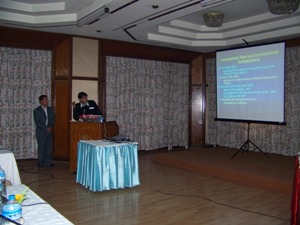
Presenters: Mr. Ramesh
Prasad Sapkota and Naba Raj Neupane
-
“Use
of Bio-engineering as an Engineering Tool in Nepal
: Approaches and Practices Adopted ”
by Ishwar Sunwar, Bio-engineering Specialist,
Kathmandu, Nepal.
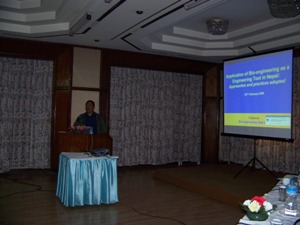
Presenter:
Mr. Ishwar Sunwar
- “Integrated
Use of Bio and Civil Engineering Techniques in
Addressing Slope Instability Problems at Krishnabhir:
A Case Study ” by Naresh Man Shakya,
Senior Divisional Engineer, Department of Roads,
Government of Nepal.
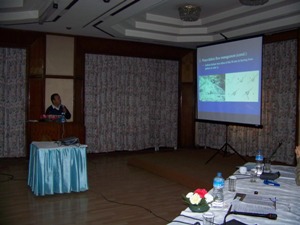
Presenter:
Mr. Naresh Man Shakya
-
“Soil
Bio-engineering Applications for Slope and Riverbank
Protection: Experiences from Western Canada
” by Pierre Raymond, President, Terra
Erosion Control Ltd. Mr. Raymond presented
and discussed various soil bioengineering applications
implemented in Western Canada, logistics to carry
material on steep slopes using portable cable
systems, the use of a walking excavator (spyder
hoe) to address steep slope and river bank rehabilitation
and newly designed vegetated riprap applications
and their potential application to the river system
in Nepal.
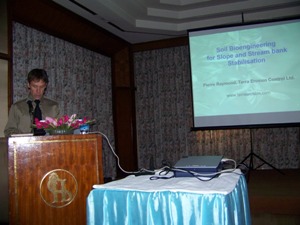
Presenter:
Mr. Pierre Raymond
|
| |
| The
seminar was followed by lunch and discussion amongst the
participants. |
|
|
| |
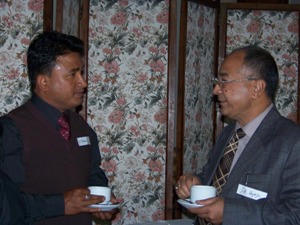
Mr.
Kalyan Thapa and Mr. Shanti K. Hyoju (Deputy Director
General) of the Department
of
Water Induced Disaster Prevention (DWIDP), Nepal Government
|
| Field
Visits
Dharan-Dhankute-Hile
Highway Project:
As
part of the research on Nepali soil bio-engineering
applications, President of Terra Erosion Control Ltd,
Pierre Raymond, along with Asian representative, Kalyan
Thapa, visited two major projects carried out by the
Department of Roads. The Dharan-Dhankute-Hile (63Km)
Road starts in the foot hills of the Churia hills, the
first hill range in front of the plain of Nepal (Southern
parts bordering India). As a result of the August 1988
earthquake, several landslides damaged and ruptured
road sections of the highway. Under British funding,
various sections of the road were rebuilt and landslides
were stabilized over eight years (1986 to 1994). A combination
of civil and soil bio-engineering techniques such as
rock gabion retaining walls, wire bolsters, brush layers,
coir matting, grass slip planting and seeding and planting
of nursery grown seedlings were experimented with to
arrest erosion and landslides. |
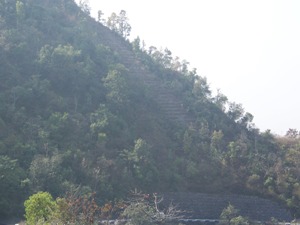
Dharan-Dhankute-Hile
Road
|
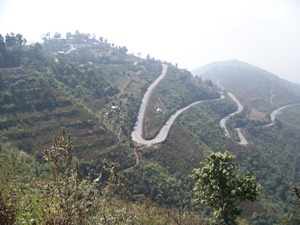
Dharan-Dhankute-Hile
Road
|
| |
| Krishnabhir
Landslide Rehabilitation:
The
other site visit was the Krishnabhir landslide rehabilitation
located 83Kms west of the capital city of Kathmandu
on the Prithivi Highway. The landslide occurred on August
11, 2000 and ruptured a section of the highway moving
large amounts of debris over the existing road and down
to the river. Between 2001 and 2003 the landslide debris
was stabilized by mitigating water flow using a combination
of civil and bio-engineering techniques. Check dams
and rock armoured channels were constructed within the
main gullies. Culverts, inclined at 15 degrees,
were installed underneath the reconstructed highway
over the drained and remaining debris. A retaining wall
was constructed at the toe of the slide adjacent to
the river. Various structures such as wire bolsters,
rofa boards (German technology), wire mesh, mulch, seeding
and seedlings were also used. Site maintenance
including vegetation and civil engineering structures
were also discussed during the site visit. |
| |
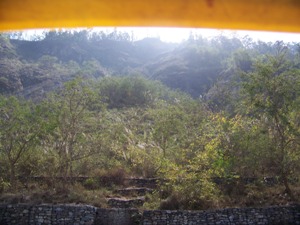
Portion
above highway
|
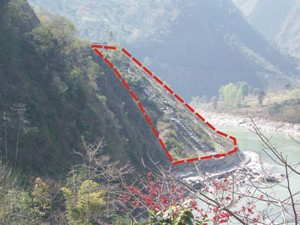
Portion
below highway
|
| |
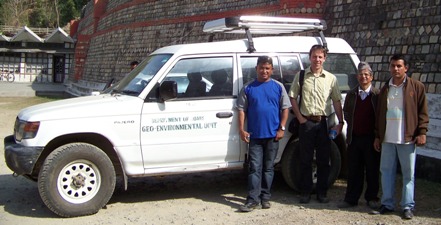
Field visit
with Department of Roads Geo-Environmental Unit
|
| |
Mugling-Marayanghat
Road:
Road
embankment protection using soil bio-engineering measures.
|
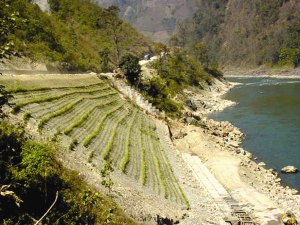
Site
after completion of work in 2002
|
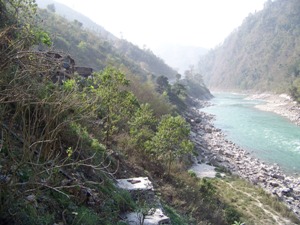
Site
visit in February 2009
|
| |
| Bamboo
Farm Visit:
As
part of the research on potential live material utilization
for vegetated riprap applications, a visit was made
to Mr. K B Gurung's bamboo farm at Damauli, in the mid
western region of Nepal. Mr. Gurung has grown and utilitized
bamboo species for various applications over the last
20 years. Two potential species were selected for lower
and upper portions of the riprap structure. Large scale
propagation methods were also discussed. |
| |
|
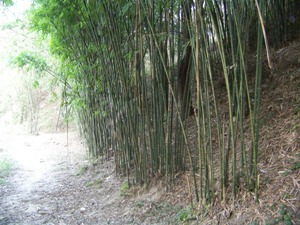
Farmed
bamboo stand
|
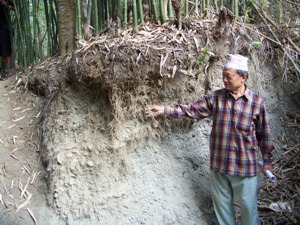
Mr.
K B Gurung, showing fibrous bamboo root system
|
| |
|
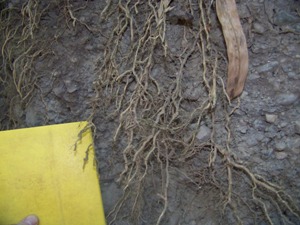
Fibrous
bamboo root system
|
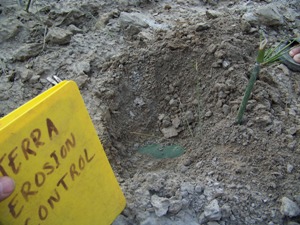
Bamboo
propagation
|
| |

Copyright © 2010
Terra Erosion Control Ltd.
Soil Bioengineering Nepal
|
|
|
|

